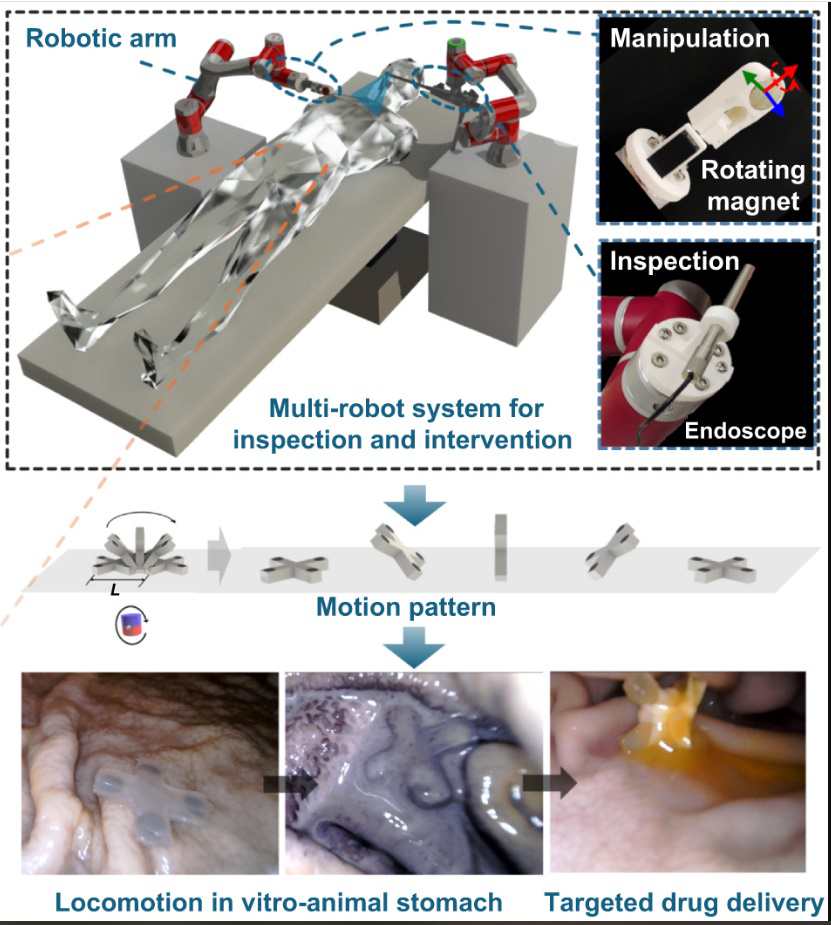| Robotic Gut Spider For Exploring Digestive Tract |
| Written by Lucy Black | |||
| Friday, 14 November 2025 | |||
|
Researchers from China have demonstrated soft, magnetically controlled robot "spiders" the size of a vitamin capsule that can move through the digestive tract to avoid the need for invasive endoscopies. The team, led by Qingsong Xu, a professor of electromechanical engineering at the University of Macau, demonstrated the soft, magnetically controlled robot can climb in any direction, even upside down, through the body's most complex digestive landscapes, where traditional endoscopes cannot go. Their findings are published in the International Journal of Extreme Manufacturing.
The micro-robot, which is made of a rubber-like magnetic material, was inspired by the locomotion of an African spider that cartwheels across the desert dunes of Namibia instead of crawling. The robot is the size of a large vitamin pill, and has been tested in animal stomachs, colons, and small intestines. Currently, doctors use endoscopes, flexible tubes fitted with a camera. These are inserted into the patient's digestive tracts through the mouth or rectum. Apart from the discomfort this causes, the endoscope an cause serious injuries, including bowel perforation. Endoscopes are also difficult to manipulate in the deeper complex regions of the bowel. The spider robot would provide a minimally invasive, controllable, and highly flexible alternative.
The problem facing micro-robots is that the stomach's mucus is sticky, and the digestive tract has multiple folds, winding channels, and abrupt height changes. The research team were inspired by the African golden wheel spider, which cartwheels down steep desert dunes at speeds of up to 44 turns per second to escape parasitic wasps. The robotic version is powered by external magnetic fields. A dual robotic arm system directs the robot's motion while also providing real-time imaging. At the end of its journey, it passes out of the body just like processed food. In controlled experiments with animal tissues, the robot successfully traversed the stomach, small intestine, and colon, and researchers plan to refine the design for in vivo trials. Prof. Xu emphasizes, "With such a robot, we may be able to reimagine how GI medical procedures can be performed. This technology could make diagnosis and treatment far more precise, painless, and effective."
More InformationPaper in International Journal of Extreme Manufacturing Related ArticlesSwarm-Developing Cyborg Cockroaches Robot Crabs Attacked By Real Crabs Harvard RoboBee Gets New Knees To be informed about new articles on I Programmer, sign up for our weekly newsletter, subscribe to the RSS feed and follow us on Twitter, Facebook or Linkedin.
Comments
or email your comment to: comments@i-programmer.info |
|||
| Last Updated ( Friday, 14 November 2025 ) |



